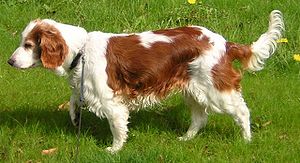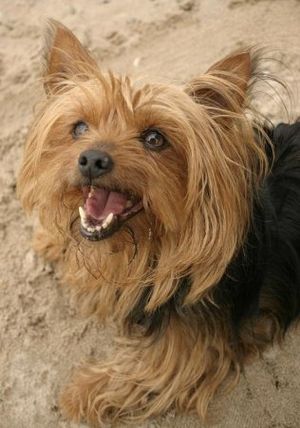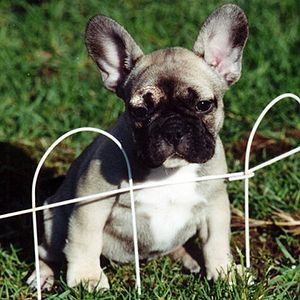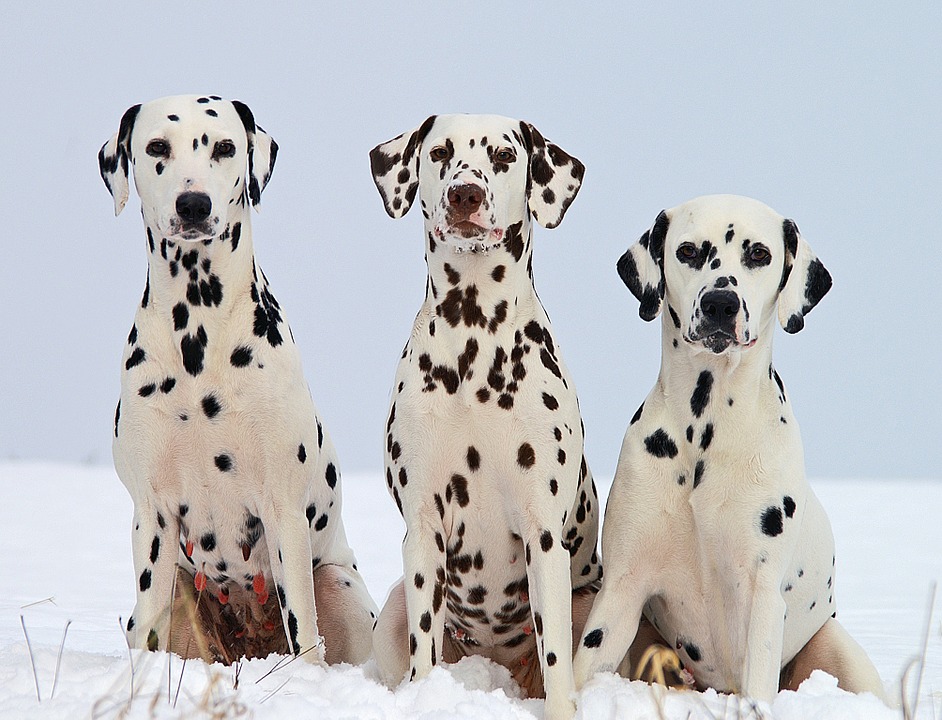 |
| Vital Statistics: |
| Place of Origin: Wales |
| Group: Sporting, Gun Dog |
| Height: 17-19 in. |
| Weight: 35-50 lbs. |
| Life span: 12-14 yrs. |
| Trainability: high |
| Good with children: yes |
| Good with other pets: yes, with dogs, chases cats & small animals |
What is the origin of the Welsh Springer Spaniel?
Spaniels have been used by the Welsh hunters for hundreds of years. The Welsh called the spaniel “starter” because of its springing when startling birds from cover. At one time, both Welsh and English Springer Spaniels were considered as one breed, the only difference being color. Today there are other differences and the Welshie is a separate breed.
What does the Welsh Springer Spaniel look like?
The Welshie is a medium size dog, 17-19 inches tall and weighing 35-50 lbs. depending on gender. The muzzle is squarish. Ears are low-set and pendant. Eyes are oval-shaped, hazel or dark colored. Feet are round. The tail is docked and carried horizontally. The medium length coat lies flat and can be straight or slightly wavy. There is feathering on the ears, chest, legs and tail. Color is red and white. The coat should be brushed once or twice a week and ears checked regularly.
What is the temperament of the Welsh Springer Spaniel?
Welshies are more easy-going than their English cousins. The hunting instinct is deeply ingrained in the Welshie, so early training to obey commands is important. Welshies bond very closely with their humans and learn easily. They are good with children and other dogs. However, they may see small animals as prey. Welshies are very active, energetic dogs and need people who are equally energetic – hiking, swimming, jogging, etc.
What is the Welsh Springer Spaniel used for?
Welshies excel in obedience, agility, tracking and hunting trials. They are also good guard dogs. Best of all, Welshies are loving, devoted family companions.
Possible Health Issues
Hip/elbow dysplasia, entropion, progressive retinal atrophy, glaucoma, cataracts, hypothyroidism
- American Cocker Spaniel
- Boykin Spaniel
- Bracco Italiano
- Brittany Spaniel
- Chesapeake Bay Retriever
- Clumber Spaniel
- Curly-coated Retriever
- Dalmatian
- English Setter
- English Springer Spaniel
- German Shorthaired Pointer
- Gordon Setter
- Irish Red & White Setter
- Japanese Akita Inu
- Kai Ken Dog
- Karelian Bear Dog
- Labrador Retriever
- Lagotto Romagnolo
- Llewellyn Setter
- Mountain Cur
- Nova Scotia Duck Tolling Retriever
- Picardy Spaniel
- Pudelpointer
- Russian Spaniel
- Spinone Italiano
- Vizsla
- Weimaraner
- Welsh Terrier
- Wetterhoun
- Wirehaired Pointing Griffon
- Wirehaired Vizsla
- American Cocker Spaniel
- Barbet
- Boulet Griffon
- Boykin Spaniel
- Bull Terrier
- Clumber Spaniel
- Curly-coated Retriever
- Dalmatian
- English Cocker Spaniel
- English Setter
- English Springer Spaniel
- Flat-coated Retriever
- German Shorthaired Pointer
- Golden Retriever
- Gordon Setter
- Harrier
- Irish Setter
- Irish Water Spaniel
- Kishu Inu
- Kooiker Hound (Kooikerhondje)
- Labrador Retriever
- Lagotto Romagnolo
- Landseer
- Mountain Cur
- Nova Scotia Duck Tolling Retriever
- Otterhound
- Picardy Spaniel
- Poodle
- Pudelpointer
- Redbone Coonhound
- Redtick Coonhound
- Rhodesian Ridgeback
- Spinone Italiano
- Stabyhoun
- Sussex Spaniel
- Telomian
- Treeing Tennessee Brindle
- Vizsla
- Weimaraner
- Wirehaired Pointing Griffon
- Wirehaired Styrian Mountain Hound
- Wirehaired Vizsla



